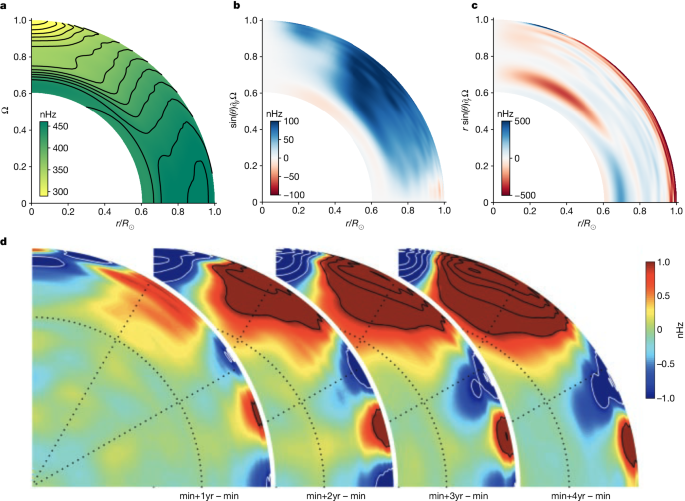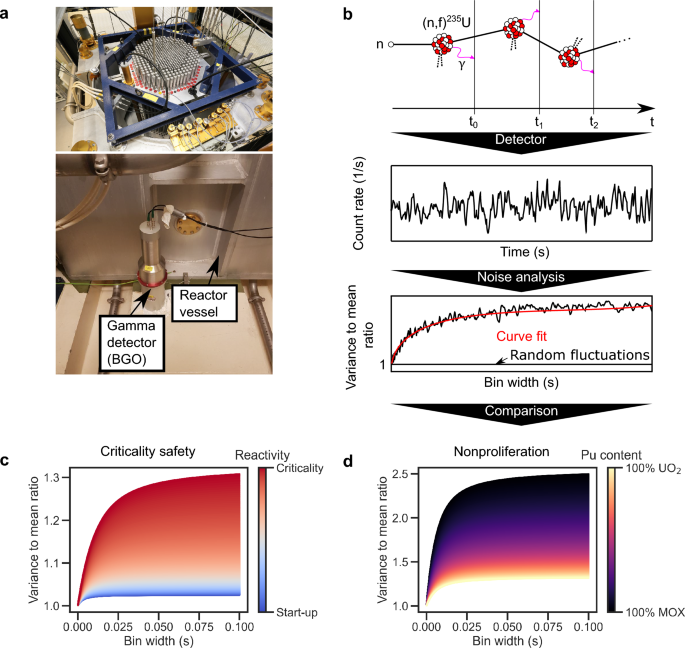2024-05-22 エディンバラ大学
<関連情報>
- https://www.ed.ac.uk/news/2024/solution-to-ancient-astronomy-puzzle-to-aid-solar
- https://www.nature.com/articles/s41586-024-07315-1
太陽ダイナモは地表近くで始まる The solar dynamo begins near the surface
Geoffrey M. Vasil,Daniel Lecoanet,Kyle Augustson,Keaton J. Burns,Jeffrey S. Oishi,Benjamin P. Brown,Nicholas Brummell & Keith Julien
Nature Published:22 May 2024
DOI:https://doi.org/10.1038/s41586-024-07315-1

Abstract
The magnetic dynamo cycle of the Sun features a distinct pattern: a propagating region of sunspot emergence appears around 30° latitude and vanishes near the equator every 11 years (ref. 1). Moreover, longitudinal flows called torsional oscillations closely shadow sunspot migration, undoubtedly sharing a common cause2. Contrary to theories suggesting deep origins of these phenomena, helioseismology pinpoints low-latitude torsional oscillations to the outer 5–10% of the Sun, the near-surface shear layer3,4. Within this zone, inwardly increasing differential rotation coupled with a poloidal magnetic field strongly implicates the magneto-rotational instability5,6, prominent in accretion-disk theory and observed in laboratory experiments7. Together, these two facts prompt the general question: whether the solar dynamo is possibly a near-surface instability. Here we report strong affirmative evidence in stark contrast to traditional models8 focusing on the deeper tachocline. Simple analytic estimates show that the near-surface magneto-rotational instability better explains the spatiotemporal scales of the torsional oscillations and inferred subsurface magnetic field amplitudes9. State-of-the-art numerical simulations corroborate these estimates and reproduce hemispherical magnetic current helicity laws10. The dynamo resulting from a well-understood near-surface phenomenon improves prospects for accurate predictions of full magnetic cycles and space weather, affecting the electromagnetic infrastructure of Earth.



